Swimming
Swimming is a water sport which consists in overcoming various distances by swimming in the shortest possible time. Regardless of the swimming stroke, sportsmen are allowed to swim no more than 15 meters underwater (at the start or after the turn).
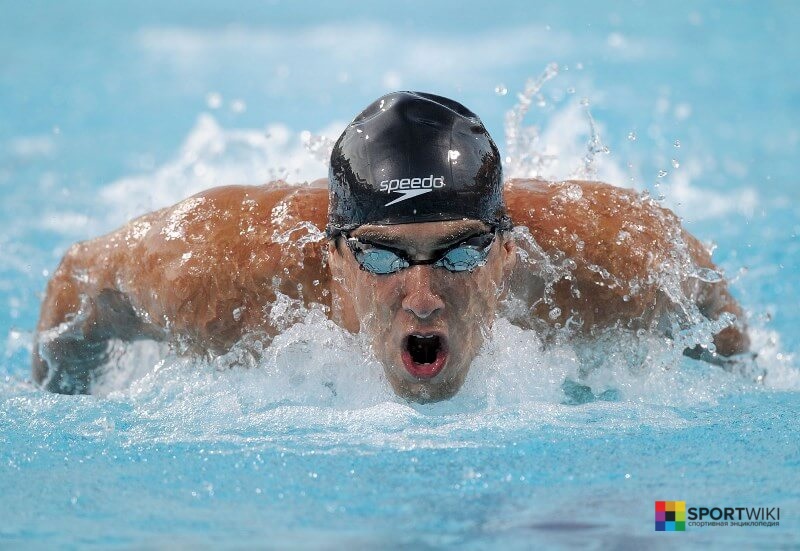
History of Swimming
Numerous findings of archaeologists indicate that people learned to swim a long time ago. Most probably, swimming training was initiated by the search for food and warfare.
In 1515, the first swimming competitions were held in Venice. In 1869, the first amateur swimming school was opened in England (The Association of Amateur Swimming in England). Later, similar schools appeared in Sweden, Germany, Hungary, France, the Netherlands, the USA, New Zealand, Russia, Italy, and Austria.
At the end of the 19th century, water sports became extremely popular. The prerequisite for this was the appearance of artificial pools.
Since 1896, swimming has been the part of the program of the Olympic Games. In 1899, the major European championship was held, it was called the European Superiority.
In 1908, the International Swimming Federation (FINA) developed, and there were established the main distances for competitions, as well as the order of conducting swims.
Swim Strokes
In swimming sport, there exist 4 types of strokes:
The crawl is the fastest way of swimming which is characterized by alternating and symmetrical movements of arms and legs, in turns. Each hand makes a wide stroke along the axis of the swimmer’s body, while the legs are raised and lowered.
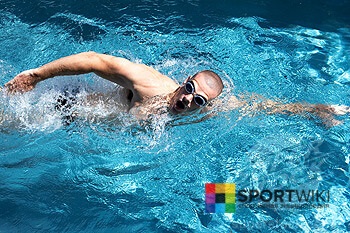
Back crawl is a swimming stroke which is visually very similar to the ordinary crawl. The swimmer also performs the hand strokes raising and lowering the legs, but he or she swims on the back and carries out a movement with his straight hand over the water.
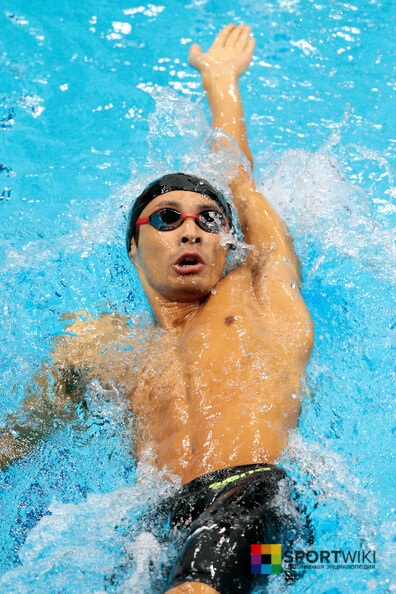
Breaststroke is a type of swimming in which the athlete lies on the chest, and with his or her hands and feet, performs symmetrical movements in parallel to the water surface.
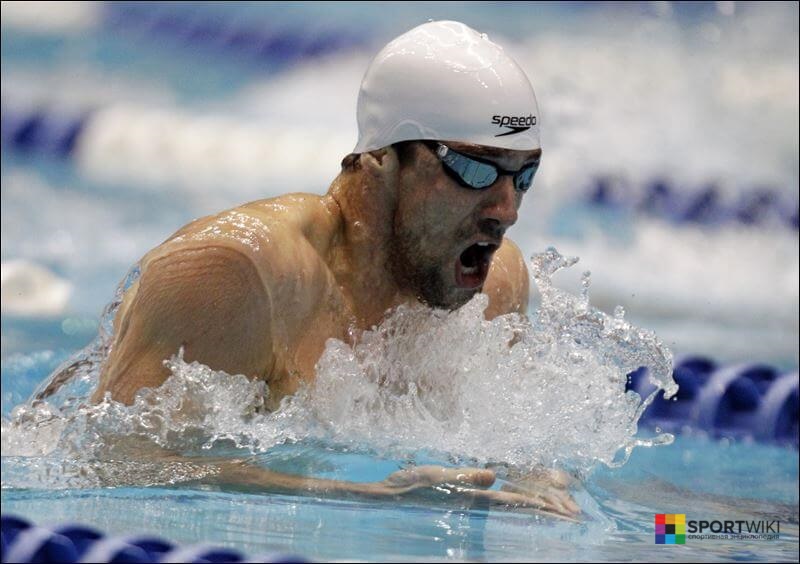
The butterfly stroke is one of the most technically complex and tedious types of swimming. While moving with the help of a butterfly stroke, the athlete makes a wide and powerful stroke, lifting his or her body above the water, while the legs and pelvis make wave-like movements. It is considered the second fastest swim stroke after the crawl.
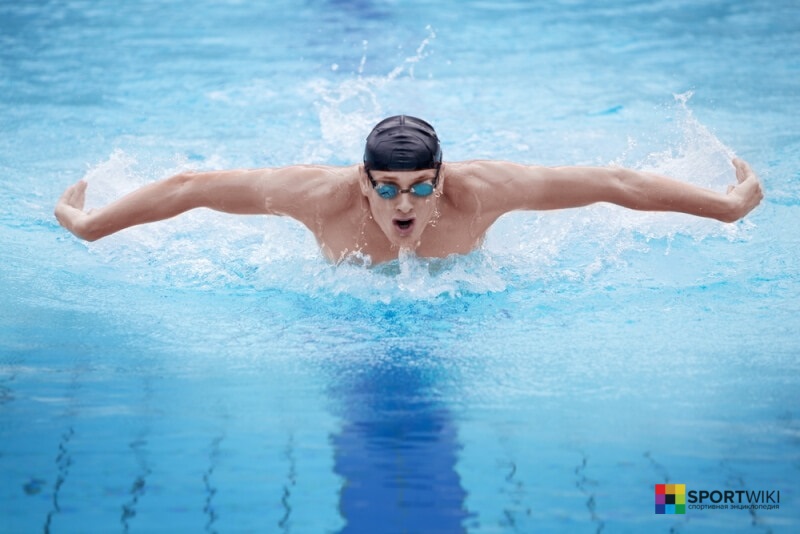
In swimming, there is a freestyle, which is commonly understood as the discipline according to which the athlete is allowed to swim in any way. Currently, all the athletes use the crawl, as it is the fastest stroke.
Swimming Pool
Swimming pool (sports bath) is a rectangular bath designed for water sports. For sports swimming pool, there should be the following sizes:
- 50 meters long and 25 meters wide (for 2.5-meter-wide lanes);
- 50 meters long and 21 meters wide (for ten 2-meter-wide lanes);
- 25 meters long and 16 meters wide (for eight 1.9-meter-wide lanes);
- 25 meters long and 11 meters wide (for six 1.75-meter-wide lanes);
- 25 meters long and 8.5 meters wide (for five 1.6-meter-wide lanes).
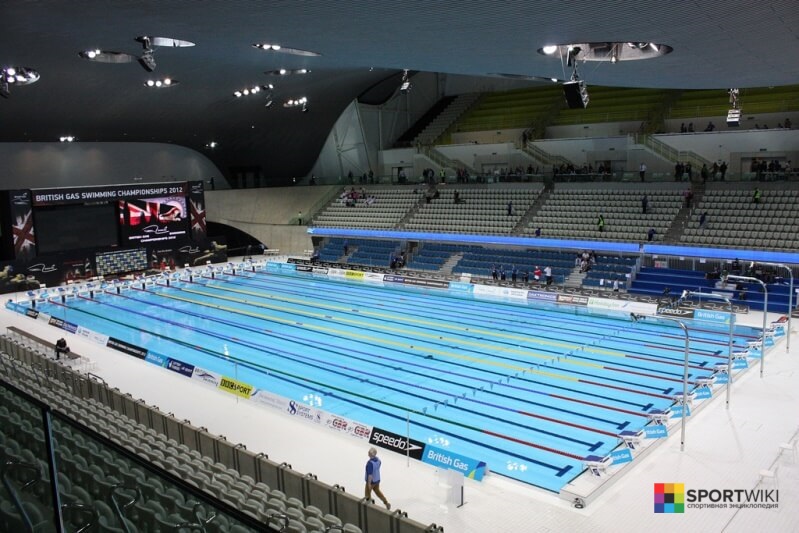
According to the rules of FINA, the baths should be 50 meters long and 25 meters wide. The pool should be divided into 8 swim lanes.
The lanes are separated from each other by the garlands of floats with the diameter of 5-15 cm. The first and the last 5 meters of each of them consist of red floats. The rest of the space is filled with green floats for 1 and 8 lanes, and the blue floats are used for 2, 3, 6 and 7 lanes, while yellow floats are for 4, and 5 tracks.
Water temperature should be from 25 to 29 °C.
Swimming Outfit
Equipment for swimming is designed to provide maximum comfort and reduce water resistance. Swimming equipment includes the following:
- Swimming cap is headwear for swimming that protects swimmer's hair from the influence of chlorinated water. Swimming caps can be made of latex, silicone, fabric, and of the combined materials.
- Swimming trunks or swimsuit is swim briefs made of the special material (polyamide combined with lycra or a mixture of polyester with PBT).
- Swimming goggles are an accessory for swimming sport which is designed to ensure normal vision under water. It also protects the eyes from chlorine fumes.
Refereeing
The main referee is responsible for holding swimming competitions. He or she also heads the panel of referees.
Starter invites the swimmers to start, checks the correctness of the occupied starting positions and gives the command to start.
Timekeeper measures the time of the participant's swim on a specific lane from the start to finish.
The finish referee determines the order of arrival of participants to the finish if an automated system for defining the winners is not available.
Inspector of turns determines the correctness of the turns on the allotted lane.
A technical referee monitors the technique of performing the appropriate style of swimming.

Competition System
At modern official competitions, there are morning and evening programs. The morning program includes preliminary swims the results of which are determined by the participants of the semi-finals and finals (the evening program).
At the official crawling contest, both men and women compete at the distances of 50, 100, 200, 400, 800 and 1500 meters, and if they use backstroke, the distance should be 100 and 200 meters. Swimmers use breaststroke and butterfly stroke at the distances of 100 and 200 meters.
Swimming Organizations
The International Swimming Federation (fr. Federation Internationale de Natation, FINA) is the organization that unites national swimming federations. The headquarters is located in Lausanne (Switzerland).

